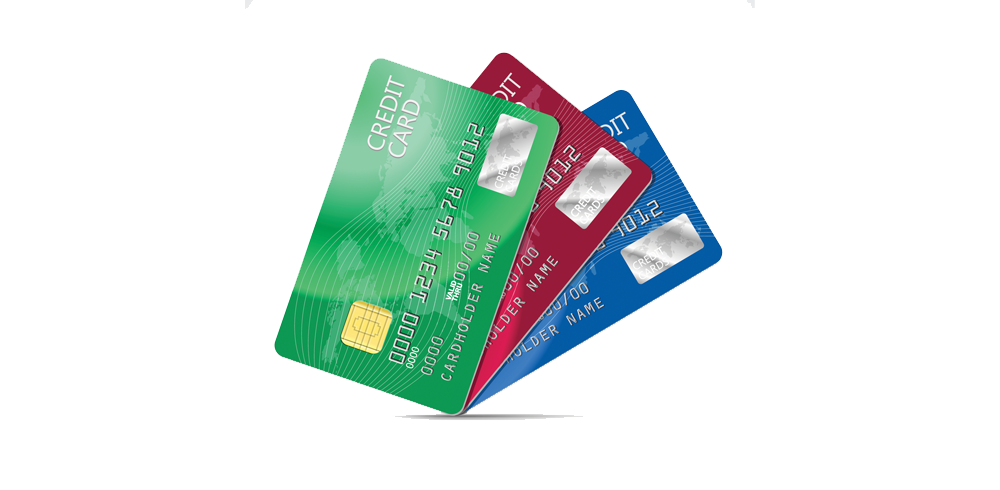Credit cards have become an indispensable part of modern financial life, offering convenience, security, and a gateway to achieving significant financial goals. From booking travel and making online purchases to building a strong credit history for a mortgage or car loan, their utility is undeniable. However, not all credit cards are created equal. The market offers two primary types: secured and unsecured credit cards.
Understanding the fundamental differences between these two forms of plastic is crucial for anyone looking to navigate their financial journey effectively, whether you’re starting from scratch with no credit history, rebuilding after past financial missteps, or simply seeking to maximize your existing credit profile. This detailed guide will break down what distinguishes secured from unsecured credit cards, illuminating their unique mechanisms, benefits, and drawbacks, and ultimately helping you determine which type aligns with your current financial standing and future aspirations.
Understanding Unsecured Credit Cards (The “Standard” Credit Card)
When most people think of a credit card, they’re envisioning an unsecured credit card. These are the most common type issued by banks, credit unions, and other financial institutions.
Definition: An unsecured credit card is a line of credit extended to you by an issuer without requiring any form of collateral. This means you don’t need to put down a cash deposit to secure the card.
How They Work: The issuer assesses your creditworthiness primarily based on your credit score, income, debt-to-income ratio, and existing financial history. Based on this assessment, they determine your eligibility and assign a credit limit – the maximum amount you’re allowed to borrow. You can then make purchases up to this limit. At the end of your billing cycle, you receive a statement detailing your spending. You have the option to pay your full balance by the due date (thereby avoiding interest charges, thanks to the grace period), or pay a minimum amount, carrying the remaining balance forward with interest accruing on the unpaid portion.
Who They’re For: Unsecured credit cards are typically for individuals who already have a good to excellent credit history (generally a credit score of 670 or higher). This established track record signals to lenders that you are a reliable borrower with a history of managing debt responsibly.
Advantages:
- No Upfront Deposit: The most significant advantage is that you don’t need to tie up a sum of your own money as collateral.
- Higher Credit Limits: Issuers are often willing to offer significantly higher credit limits compared to secured cards, providing more financial flexibility.
- Robust Rewards and Perks: Unsecured cards frequently come with enticing rewards programs (cash back, travel points/miles) and valuable perks like sign-up bonuses, travel insurance, purchase protection, extended warranties, and concierge services.
- Greater Financial Flexibility: They are designed for everyday spending, large purchases, and leveraging rewards.
Disadvantages:
- Can Lead to Debt: The ease of access to credit, especially with higher limits, can lead to overspending and the accumulation of high-interest debt if not managed responsibly.
- Higher APRs: If you carry a balance, interest rates (APRs) on unsecured credit cards can be quite high, potentially negating any rewards earned.
- Approval Requires Good Credit: If you have a limited or poor credit history, it can be very challenging to qualify for an unsecured credit card, especially those with the best terms and rewards.
Understanding Secured Credit Cards (The Credit-Builder’s Ally)
Secured credit cards are often the starting point for individuals who are new to credit or are actively working to rebuild a damaged credit history.
Definition: A secured credit card is a type of credit card that requires you to provide a cash security deposit to the issuer. This deposit typically acts as your credit limit and serves as collateral for the card.
How They Work: When you apply for a secured card, you’ll be asked to provide a deposit, for example, $200 or $500. This amount then becomes your credit limit. The deposit mitigates the risk for the credit card issuer, as they know they can recoup any unpaid debt from your deposit if you default. Despite the deposit, a secured card functions like a regular credit card: you make purchases, you receive a monthly statement, and you are required to make payments by the due date. Just like with an unsecured card, it’s crucial to pay your balance in full and on time to avoid interest and build positive credit history. The security deposit is returned to you when the account is closed or, more commonly, when the card “graduates” to an unsecured card.
Who They’re For: Secured credit cards are specifically designed for:
- Individuals with No Credit History: Young adults, recent immigrants, or anyone who has never taken out a loan or used credit before.
- Individuals with Poor Credit History: Those who have faced challenges like bankruptcy, defaulted loans, or numerous missed payments and need to demonstrate renewed financial responsibility.
Advantages:
- Easier Approval: Because the card is backed by your deposit, issuers are much more willing to approve applicants with limited or poor credit history.
- Excellent for Building/Rebuilding Credit: Secured cards report your payment activity to the major credit bureaus, just like unsecured cards. Consistent, on-time payments and low credit utilization will positively impact your credit score.
- Predictable Credit Limit: Your credit limit is typically equal to your deposit, making it easy to manage and avoid overspending.
- Pathway to Unsecured Cards: Many secured card programs are designed with a “graduation” path, allowing you to transition to an unsecured card (with your deposit returned) after a period of responsible use (e.g., 6-12 months).
- Some Offer Rewards: A growing number of secured cards now offer basic rewards, like 1% cash back on purchases, which is a nice bonus for a credit-building tool.
Disadvantages:
- Requires an Upfront Cash Deposit: This can be a barrier for some, as it ties up your money.
- Typically Lower Credit Limits: Limits are usually tied to your deposit, meaning they are often low compared to unsecured cards.
- Fewer Perks/Rewards: While some offer basic rewards, they generally lack the robust benefits and sign-up bonuses of premium unsecured cards.
- Money is Tied Up: Your deposit is held by the issuer and cannot be accessed until you close the account or it graduates to an unsecured card.
Key Differences Summarized
Here’s a quick comparison of the core distinctions:
| Feature | Unsecured Credit Card | Secured Credit Card |
|---|---|---|
| Collateral | No security deposit required | Requires a cash security deposit |
| Approval | Based on credit history, income, and debt-to-income ratio | Easier to obtain, suitable for no or poor credit |
| Credit Limit | Determined by issuer’s assessment of creditworthiness | Typically equal to your security deposit |
| Risk to Issuer | Higher risk, relies on borrower’s ability to pay | Lower risk, protected by the deposit |
| Features | Often includes rewards, sign-up bonuses, and advanced perks | Generally basic, some offer limited rewards, focus is on credit building |
| Purpose | General spending, rewards maximization, large purchases | Primarily for building or rebuilding credit history |
Choosing the Right Card for Your Stage
The choice between a secured and an unsecured credit card depends entirely on your current credit standing and financial goals:
- For No or Poor Credit: A secured credit card is almost always the best, and often the only, starting point. Focus on using it responsibly: pay your balance in full and on time every month, and keep your credit utilization (the amount you spend relative to your credit limit) low. After 6-12 months of disciplined use, you’ll likely be in a position to apply for an unsecured card.
- For Good to Excellent Credit: You’ll qualify for a wide range of unsecured credit cards with more generous rewards, higher credit limits, and valuable perks. Your focus should be on selecting a card that maximizes rewards based on your spending habits and offers benefits that align with your lifestyle.
Responsible Usage: The Common Thread
Regardless of whether your card is secured or unsecured, the principles of responsible credit card management remain the same and are paramount for building and maintaining a strong credit score:
- Pay Your Bills On Time, Every Time: This is the single most important factor influencing your credit score.
- Keep Your Credit Utilization Low: Aim to keep your spending below 30% of your credit limit, and ideally below 10%.
- Monitor Your Credit Score and Report: Regularly check your credit score and review your credit report for any errors or fraudulent activity.
- Avoid Carrying a Balance: Always pay your statement balance in full to avoid accruing high-interest charges, which can quickly negate any rewards earned.
Conclusion
Both secured and unsecured credit cards serve distinct, valuable purposes in the financial ecosystem. Secured cards are crucial stepping stones for those embarking on or rebuilding their credit journey, offering a safe and effective way to establish a positive credit history. Unsecured cards, on the other hand, provide greater financial flexibility, higher limits, and richer rewards for individuals with established creditworthiness. The “best” choice is the one that aligns with your current needs and helps you progress responsibly towards your long-term financial goals. By understanding these differences and committing to sound financial practices, you can leverage either type of card to achieve lasting financial health and open doors to future opportunities.




